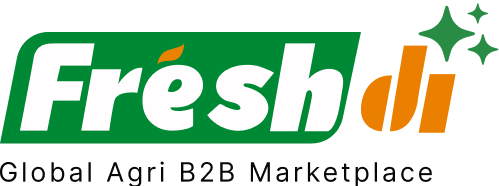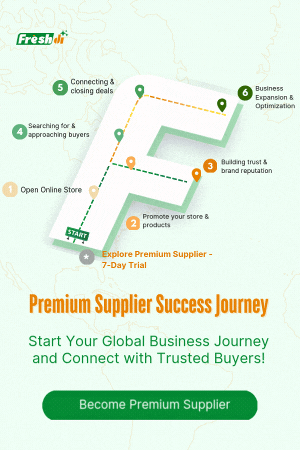Introduction – Understanding South Korea’s Reputation for Quality Chocolate Confectionery
When you think of South Korea, you might picture K-pop, skincare, or high-tech innovation. But there’s another gem quietly making waves—chocolate confectionery. South Korea has carved out a solid reputation in the global chocolate market, thanks to its high production standards, innovative flavors, and a growing appetite for premium sweets.
Why is this important for businesses looking to source chocolate products? Because knowing where your chocolate comes from—and how it’s made—can make all the difference in delivering quality to your customers. South Korea’s commitment to food safety, regional innovation, and premiumization makes it a compelling hub for sourcing chocolate confectionery.
Defining & Verifying Chocolate Confectionery Excellence in South Korea
So, what makes South Korean chocolate stand out? The answer lies in stringent regulations, rigorous certifications, and locally inspired flavors.
National Standards That Set the Bar
The Ministry of Food and Drug Safety (MFDS) has laid out strict guidelines for chocolate products. For example:
- Milk chocolate must contain at least 25% cocoa solids and 12% milk solids.
- Dark chocolate must have a minimum of 35% cocoa solids.
- There are also tight controls on additives and contaminants to ensure safety.
These regulations help make sure every bite delivers on both quality and trust.
👉 MFDS Chocolate Standards
Certifications That Matter
Top chocolate manufacturers in South Korea often go a step further by earning globally recognized food safety certifications like:
- FSSC 22000
- BRC (British Retail Consortium)
These certifications ensure that the entire production process—from sourcing raw materials to final packaging—is up to international standards.
Take LOTTE, one of South Korea’s confectionery giants. They’ve implemented LOTTE ADVANCE, a proprietary quality system built on these global standards for even tighter control.
👉 LOTTE Sustainability Report
The Power of Regional Flavors
Ever heard of “loconomy”? It’s a hot trend in South Korea where local ingredients are used to create regionally inspired chocolates. For example:
- Sunchang Dameun Chocolates fuse gochujang (red chili paste), chestnuts, and blueberries from the Sunchang region.
- These unique combinations not only elevate taste but also support local farmers and producers.
👉 Korea JoongAng Daily on Loconomy
Freshdi Insight
On platforms like Freshdi, RFQs (Requests for Quotation) often include specific quality requests like “FSSC 22000 certified” or “minimum 35% cocoa content,” showing that buyers are prioritizing verified excellence.
Top 3 Verified Chocolate Confectionery Suppliers in South Korea – Pioneering Quality Standards
Let’s get down to business. Here are the Top 3 Chocolate Confectionery Suppliers in South Korea for Q4 of 2025, as ranked by export performance, global reach, certifications, and buyer reviews on Freshdi.
1. Younggun Trading Corporation
- Why Choose Them: Known for wide export capabilities and a strong focus on premium chocolate offerings.
- Specialty: Offers a diverse range of chocolate confectioneries, including artisanal and functional chocolates.
- Certifications: FSSC 22000 and HACCP-compliant facilities.
- Buyer Feedback: Rated highly on Freshdi for packaging quality and shipment reliability.
2. Hyojung Fnt Co.
- Why Choose Them: A trusted name in the Korean chocolate landscape, especially for locally inspired flavors.
- Specialty: Incorporates traditional Korean ingredients such as yuzu, green tea, and honey into chocolate.
- Certifications: BRC and ISO 22000.
- Buyer Feedback: Appreciated for flavor innovation and custom formulation services.
3. Samkwang Fisheries
- Why Choose Them: While the name might suggest seafood, this diversified supplier also handles confectionery, including chocolate-coated dried fruits.
- Specialty: Ideal for businesses looking for snack-style chocolate products.
- Certifications: GMP and FSSC 22000.
- Buyer Feedback: Praised for consistent quality and flexible MOQs (Minimum Order Quantities).
Dynamic Ranking Note
Keep in mind that supplier performance can change! Platforms like Freshdi often highlight “Suppliers of the Month” or “Top Performers of the Quarter” based on recent reviews, RFQ fulfillment rates, and export activity. Always check for the latest rankings to discover new rising stars.
Market Navigation – Navigating Market Trends for Premium Chocolate Confectionery
The global chocolate game is changing fast—and South Korea is keeping pace.
Premium is the New Normal
Consumers are more informed and picky than ever. They want:
- High cocoa content
- Organic certifications
- Ethically sourced ingredients
South Korean suppliers are stepping up by offering dark, vegan, and organic chocolate options that check all these boxes.
The Flavor Frontier
Gone are the days when chocolate meant just milk or dark. Today’s chocolate lovers are looking for:
- Unique pairings like sea salt caramel, red pepper flakes, or matcha.
- Functional chocolates with added vitamins, collagen, or probiotics.
South Korea’s flair for fusion and innovation makes it uniquely equipped to meet these demands.
Traceability & Transparency
Consumers—and the businesses that serve them—want to know where their chocolate comes from. Traceable sourcing, clearly labeled ingredients, and visible certifications are no longer optional—they’re expected.
Freshdi Insight
Market trends on Freshdi show a rising number of RFQs that request:
- “Single-origin cocoa”
- “Sustainable farming certification”
- “Fair Trade or Rainforest Alliance compliance”
This shows that buyers aren’t just focused on taste—they’re focused on values.
Conclusion – Strategic Sourcing for Quality
In a world where consumers are craving more than just sweetness—they want story, authenticity, and ethics—South Korea is delivering on all fronts. From strict government oversight to local flavor innovation and globally recognized certifications, this is a sourcing destination that ticks all the boxes.
If you’re a business eyeing the chocolate confectionery market, here’s your roadmap:
Checklist for Chocolate Confectionery Buyers
✅ Look for MFDS-compliant cocoa and milk content
✅ Prioritize suppliers with FSSC 22000, BRC, or ISO certifications
✅ Explore regional specialties for unique product offerings
✅ Verify supplier credibility through platforms like Freshdi
✅ Monitor supplier performance via Freshdi’s dynamic rankings
✅ Use RFQs to specify exact quality, flavor, and certification needs
✅ Keep tabs on global trends and consumer preferences
Future Outlook
As the global chocolate market continues to evolve, so will South Korea’s role in it. Expect:
- More functional and health-forward chocolates
- Increased demand for traceable and ethical sourcing
- A stronger focus on hyper-local ingredients
- Tech-driven sourcing via platforms like Freshdi
By staying informed and leveraging the right tools and suppliers, businesses can stay ahead of the curve—and deliver chocolate products that wow their customers.
How Platforms Like Freshdi Empower Buyers
Freshdi isn’t just a supplier directory—it’s a strategic sourcing engine. From:
- Verified supplier profiles
- Real-time RFQ management
- Quality certification filtering
- Dynamic performance rankings
…it’s the platform smart buyers rely on to make informed sourcing decisions. Whether you’re a boutique chocolatier or a multinational food brand, Freshdi helps you source with confidence and clarity.
References
- MFDS Chocolate Standards
- LOTTE Sustainability Report
- Korea JoongAng Daily on Loconomy
- IMARC South Korea Chocolate Market
FAQs
1. What certifications should I look for when sourcing chocolate confectionery from South Korea?
Look for certifications like FSSC 22000, BRC, and ISO 22000, which ensure food safety and quality from farm to final product.
2. Are South Korean chocolate suppliers open to private-label partnerships?
Yes! Many suppliers on platforms like Freshdi offer OEM and ODM services tailored to your branding and formulation needs.
3. How do I ensure the supplier meets my quality standards?
Use RFQs to specify your needs—like cocoa content or organic status—and verify with Freshdi’s supplier reviews and certifications.
4. What makes South Korea’s chocolate different from other countries?
South Korean chocolate stands out for its loconomy-inspired flavors, high safety standards, and focus on premium, health-conscious products.
5. How often do Freshdi’s supplier rankings update?
Freshdi updates supplier rankings monthly or quarterly based on buyer reviews, RFQ performance, and certification updates, so you always have the latest insights.


